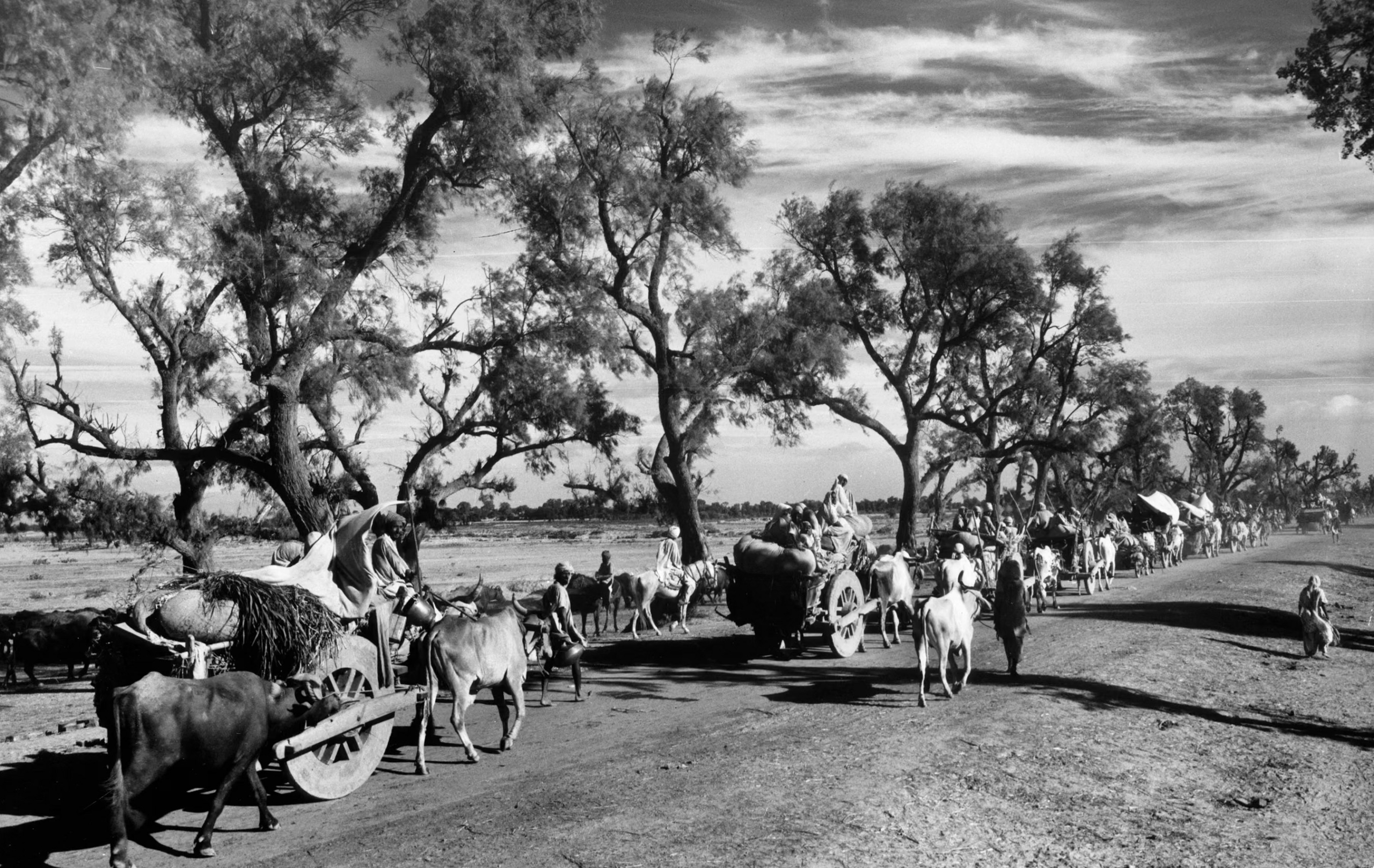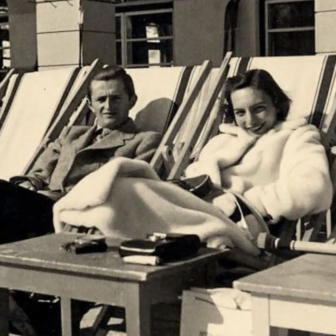Sometime in 2017 a group of friends in Oxford, all with backgrounds in South Asia, were reflecting on their families’ memories of “the partition” and the exit of the British from their Indian empire seventy years earlier. They had heard since childhood the lament of grandparents who could “never go back” to the towns and villages they had grown up in and had been forced to flee.
Out of these conversations grew an organisation they called Dastaan — “story” — and a digital project aiming to recover elements of the old stories, record the stories themselves and visit localities to film how places and people looked seventy years on.
For most scholars and professionals, those goals would have been enough. But among the group was a not-so-ordinary young scholar. Sam Dalrymple grew up between India and Britain and learned Hindi and Urdu as a child in Delhi. At Oxford, he did a degree in Persian and Sanskrit. He is the son of William Dalrymple, the immensely popular historian of India, and Olivia Fraser, a distinguished painter of Indian themes.
Sam Dalrymple acknowledges that his new book “would not exist without my co-founders at Dastaan” and the cooperation of dozens of keen interviewees. Nevertheless, at twenty-eight he is the one who pulled it all together to produce an engaging 520-page perspective on the British exit from “east of Suez.”
Shattered Lands: Five Partitions and the Making of Modern Asia could have been a straightforward administrative history of how the British shed their “Indian empire.” But the Dastaan team wanted more than that: they wanted to capture the horror and humanity of the times, record experiences and visit sites their elders had to abandon.
The subtitle’s reference to “five partitions” and “making modern Asia” imbues the book with contemporary urgency. The narrative also presents readers with a hypothetical question: what would have happened if the British had left “India” with a single government, which is the way they ruled it up to the 1930s? There would be no Pakistan and no Bangladesh; Myanmar would be just another Indian state like Kerala or Rajasthan; and every sheikhdom along the Arabian south coast from Aden to Kuwait would be subject to New Delhi. The “direct report” for British officials in these places was to the governor-general in New Delhi, who in turn was responsible to London.
Dalrymple’s “five partitions” involve a great many place names (the book has twenty maps) and the “five partitions” themselves warrant dot-points to keep them straight:
• the creation of Muslim-majority Pakistan and Hindu-majority (but secular) India in 1947;
• the separation of Burma (today’s Myanmar) from the Indian empire, begun in 1937;
• the absorption of the Indian princely states, mostly into India, in 1947–48;
• the emergence of Bangladesh in 1971;
• Britain’s exit from the Gulf states and the founding of United Arab Emirates in 1971.
The “five partitions” also provide the skewer that holds these stories together, though for some readers it may seem to put a heavy burden on the meaning of “partition.”
The administrative side of the story begins in 1937 with the hiving off of Burma from the government of India. With sketchy boundaries in the northwest, Burma was made a separate entity under the colonial office, rather than the India office, in London.
Within five years, Burma was invaded by the Japanese and its substantial Indian population flooded towards India as refugees. In the mountainous jungles of the country’s northwest, local people were mobilised to fight for the Japanese, the British or — in the case of Aung San (father of Aung San Suu Kyi) — both. By 1948, when it became a sovereign state, Burma was one of the most militarised regions of the old empire.
The Aden-to-Kuwait story was similarly complicated. Like Burma, Aden had been detached from India in 1937, but it continued to use Indian currency until 1951, as did the other coastal enclaves. Substantial Indian populations, which had followed British control in pursut of commerce and used Indian rupees, began to return to India as the British withdrawal progressed towards the final departure in 1971.
Timing was important. Today, India’s Mukesh Ambani is the richest man in Asia. He was born in Aden in 1957 shortly before his father Dhirubhai wisely decided it was time to return to India after ten years of making the family’s initial fortune in Aden.
Shattered Lands cleverly weaves such individual stories into the political narrative. They are at their most affecting when they involve members of the Dastaan group. Sparsh Ahuja, a key collaborator, is central to one of the book’s most moving stories, which involves the creation of the sovereign states of Pakistan and India.
Ahuja’s grandfather grew up in a quiet village in the west of “Punjab province” of British India. The partition boundary was to split the province in half. His grandfather’s village was made up of Muslims, Hindus and Sikhs. Trouble came on a fateful day in summer 1947: Hindu and Sikh houses were looted and occupants killed. Ahuja’s family hid from the carnage. At nightfall, the village headman, a Muslim, brought the family to his house and hid them. An army contingent, presumably part of the woefully inadequate Punjab Boundary Force, arrived the next day and escorted them across the newly drawn border between Pakistan and India.
The Ahuja family story doesn’t end there. Ahuja and Dalrymple determined to visit the village to discover what it looks like today. It was still off the beaten track in the countryside of Pakistani Punjab. They found the current headman and told him how Ahuja’s family had been saved in 1947. “The man went quiet, before whispering, ‘You are talking about my father.’” Tears and embraces all round.
Given Shattered Lands’s broad sweep, historians of India are bound to find things to disagree with. There is, for example, a tendency to over-egg the pudding and stress possibilities that were never more than longshots.
Dalrymple suggests, for example, that independence might have been possible for some of the princely states. It’s true that the British puffed up the princes’ dignity with various ceremonies and decorations. But the “doctrine of paramountcy,” the convenient fiction that fitted the princes into the imperial pecking order, decreed that the princes were in “subsidiary alliance” with the “paramount power” and, in any dispute, “the paramount power will be paramount.” In gangland terms, the princes were buying protection.
With the British departure, “paramountcy” was deemed to lapse, and there was a scramble to get the princes to sign on with a new boss — either India or Pakistan. But the possibility of some of the princely territories — even the vast landlocked state of Hyderabad or the coastal trading state of Travancore — achieving sovereign status was remote. Democratic enthusiasm was too strong, and the power and resolve of the new India and Pakistan too great.
But such discussions are for seminars and solemn book clubs. Shattered Lands is an ambitious, lively and skilfully constructed book — just the thing to read on a flight from Australia to Dubai or Doha, as the plane passes over the Indian Ocean and crosses the southern tip of India, where on a clear day you might catch sight of the erstwhile princely state of Travancore, now long and happily (more or less) a segment of the Indian state of Kerala. •
Shattered Lands: Five Partitions and the Making of Modern Asia
By Sam Dalrymple | William Collins | $39.99 | 520 pages




